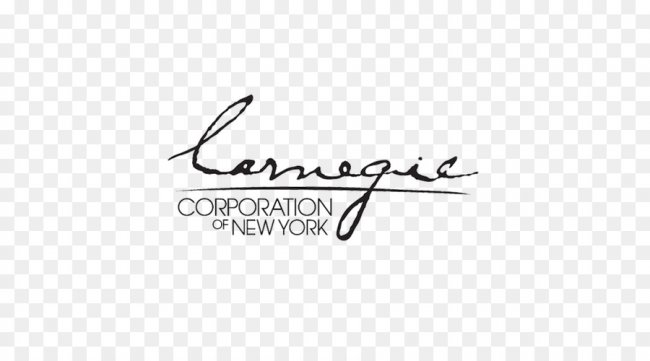Carnegie Corporation of New York

Carnegie Corporation of New York, which Andrew Carnegie (1835–1919) established in 1911 “to promote the advancement and diffusion of knowledge and understanding,” is one of the oldest and most influential of American grantmaking foundations.
The Corporation has devoted unremitting effort toward the two issues Andrew Carnegie considered of paramount importance: international peace and the advancement of education and knowledge. While these remain areas in need of great attention through our nation and the world, we have maintained a long tradition of striving to meet the challenges that are with us and responding to the constant ebb and flow of issues and ideas.
In this section of our website, we invite you to explore our more than 100 years of history including:
Founding
By 1911, Andrew Carnegie had endowed five organizations in the United States and three in the United Kingdom, and had given away more than $43 million for public library buildings and close to $110 million for other purposes. Nevertheless, 10 years after the sale of the Carnegie Steel Company, he still had more than $150 million and, at the age of 76, was tiring of the burden of philanthropic decision making.
A Foundation Called a Corporation
On the advice of Elihu Root, the Nobel Peace Laureate and long-time friend and legal adviser, Carnegie decided to establish a trust to which he could transfer the bulk of his remaining fortune to be given away during his lifetime, and that would, ultimately, have the responsibility for distributing his wealth after his death. Having already used the conventional labels for his previously endowed institutions, he selected “Corporation” for this last and largest. It was chartered by the State of New York as Carnegie Corporation of New York. During 1911 and 1912, Carnegie gave the Corporation $125 million, making it the largest single philanthropic trust ever established up to that time. As the residual legatee under his will, the Corporation received an additional $10 million when the estate was settled. While Carnegie intended most of his philanthropic work to benefit the United states, he earmarked a portion of the endowment to be used for similar purposes in Canada and what were then the British Colonies. This part of the endowment was first known as the Special Fund, then the British Dominions and Colonies Fund, and later the Commonwealth Program.
The Corporation’s First Executive Committee
In the Corporation's early years, Andrew Carnegie himself was president and a trustee. James Bertram, his private secretary, and Robert A. Franks, his financial agent, were also trustees and, respectively, secretary and treasurer of the Corporation. These three comprised the first executive committee and made most of the funding decisions. The other seats on the board were held ex-officio by the presidents of the five previously established Carnegie organizations in the United States: Carnegie Institute (of Pittsburgh) (1896), Carnegie Institution of Washington (1902), Carnegie Hero Fund Commission (1904), Carnegie Foundation for the Advancement of Teaching (1905), and Carnegie Endowment for International Peace (1910). Shortly after Carnegie’s death in 1919, the trustees elected a full-time, salaried president as chief executive officer of the Corporation and made him an ex-officio member of the board.
“One of the chief obstacles which the philanthropist meets in his efforts to do real and permanent good in this world is the practice of indiscriminate giving.” — Andrew Carnegie, “The Gospel of Wealth”
A Donor’s Vision
Initially, grants followed the pattern of Carnegie's personal philanthropies. Until 1917, gifts for the construction of public libraries and for the purchase of church organs continued. The other Carnegie organizations in the United States also received substantial grants for their programs, as did universities, colleges, schools, and general educational agencies. In his letter of gift to his original trustees, Carnegie wrote (employing the simplified spelling he favored): “Conditions upon erth [sic] inevitably change; hence, no wise man will bind Trustees forever to certain paths, causes or institutions. I disclaim any intention of doing so. On the contrary, I giv [sic] my Trustees full authority to change policy or causes hitherto aided, from time to time, when this, in their opinion, has become necessary or desirable. They shall best conform to my wishes by using their own judgement.” Thus, over the years, the Corporation’s priorities for grant making have changed, while always supporting education and international peace.
Toward a More “Scientific Management”
Following Carnegie’s death, the Corporation began to align its programs with the more scientific assumptions that were coming to dominate social initiatives in the early part of the 20th century. Convinced of the nation’s need to increase scientific expertise and “scientific management,” the Corporation sought to build centers of excellence in the natural and social sciences. Large grants were made to the National Academy of Sciences/National Research Council, the Carnegie Institution of Washington, the National Bureau of Economic Research, the Food Research Institute at Stanford University, and the Brookings Institution. At this time, the Corporation also developed an interest in adult education and lifelong learning as a logical sequel to Carnegie's preoccupation with libraries as “the university of the people.”